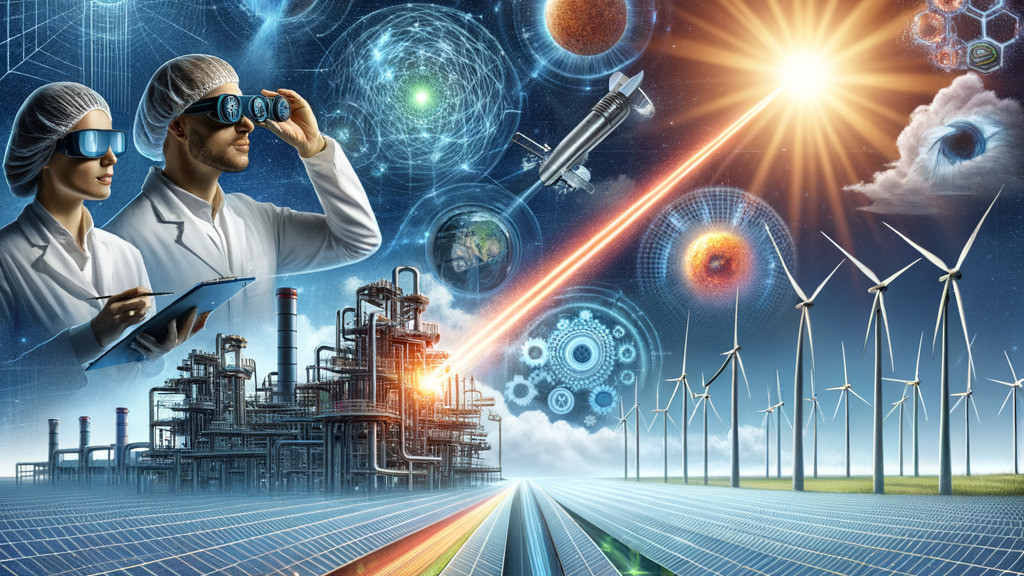In the sphere of renewable energy, lasers have established themselves as essential tools, contributing significantly to the generation, storage, and distribution of clean power. Their capacity to produce highly concentrated beams of light with precise control endows them with distinctive qualities that are advantageous to numerous renewable energy technologies. As the global shift towards sustainable energy sources intensifies, the role of lasers is becoming more pronounced in the evolution and deployment of these eco-friendly systems. The following points illustrate some of the ways in which lasers are utilised:
Enhancing Solar Power Production
Lasers offer several advantages for improving solar cell efficiency and lowering manufacturing costs. Through a process called laser-induced texturing, precise microscopic textures are created on cell surfaces to reduce reflective losses. This increases light absorption for higher power outputs.
During cell fabrication, lasers perform delicate cutting, welding, and scribing tasks with great accuracy. Laser cutting allows for intricate patterns in silicon wafers. Laser welding seamlessly joins different components. Laser scribing defines the electrical contacts with intricate lines.
Concentrated solar power (CSP) systems also utilize lasers. By carefully aligning mirrors or lenses, lasers ensure optimal sunlight concentration within solar thermal receivers. This maximizes heat production and the amount of electricity generated.
Improving Wind Turbine Reliability
Remote laser inspections help detect potential faults in wind turbines before serious damage occurs. Laser scanners can identify microscopic cracks or structural weaknesses invisible to the naked eye. This allows proactive maintenance to prevent costly failures.
During blade manufacturing, precision laser techniques minimize waste. Laser trimming removes excess material, resulting in smooth, aerodynamic surfaces. Laser cutting shapes the complex blade profiles with precision. These laser applications help maximize blade efficiency and turbine power output over the long term.
Enabling Safe Hydropower Operations
Hydropower dams, spillways, turbines and other structures are regularly scanned with laser systems. High-resolution 3D models detect even small flaws or erosion issues. This critical information lets engineers ensure dam safety and optimize equipment performance.
Laser applications are also employed in manufacturing hydropower components like turbines and generators. Laser cutting, welding and engraving produce parts with the tight tolerances needed to withstand pressures and stresses of water power.
Innovative Hydrogen Production
Hydrogen fuel has gained significant attention as a clean and sustainable alternative to traditional fossil fuels. One innovative method being explored is laser-induced water splitting. This process involves using lasers to initiate a chemical reaction that separates water molecules (H2O) into hydrogen (H2) and oxygen (O2) gases.
Laser-induced water splitting holds great potential because it offers a more efficient and environmentally friendly approach to hydrogen production. Traditional methods, such as steam methane reforming, often rely on fossil fuels and release carbon dioxide as a byproduct. In contrast, laser-induced water splitting utilizes renewable energy sources, like solar power, to power the lasers, making it a greener option.
The process works by focusing intense laser beams onto a catalyst-coated surface immersed in water. The energy from the laser is absorbed by the catalyst, which then promotes the splitting of water molecules into hydrogen and oxygen. This hydrogen gas can then be stored and used as a clean energy source for various applications, including transportation and power generation.
Optimizing Geothermal Exploration and Drilling
The utilization of LIBS (Laser-Induced Breakdown Spectroscopy) laser analysis chemistry brings significant benefits to this energy sector. By vaporizing rock samples with a LIBS laser, geologists can gain valuable insights into the chemical composition of the subsurface and identify potential geothermal reservoirs. This technology allows for a more precise understanding of the geological conditions, enabling better assessments of the energy potential of a particular site.
But lasers don't just stop at exploration. They also play a crucial role during drilling operations, optimizing efficiency and reducing costs. Laser systems are capable of penetrating hard igneous rocks more rapidly compared to conventional drilling methods. This increased speed translates into reduced drilling time and associated costs. Additionally, by requiring less drilling fluid waste, lasers help minimize the environmental impact of geothermal development.

(symbol image, credit CLOU)
Enabling Space-Based Solar Power Transmission
Beyond enhancing terrestrial solar installations, lasers can also play a role in transmitting solar power generated in space. Some concepts propose collecting sunlight in geostationary orbits using large solar panels. Lasers would then convert this solar electricity into highly focused energy beams.
These beams would be precisely aimed using laser transmitters to continuously deliver power to ground-based receivers on Earth. Advanced technologies like adaptive optics and beam propagation would ensure the laser remains accurately aligned during transmission, even as the satellites and receivers move relative to each other.
At receiving stations, photovoltaics or heat exchangers would convert the laser energy back into electricity for integration with terrestrial grids. This space-based solution could tap into the sun's energy 24/7, avoiding interruptions from weather or nighttime that plague ground-level solar farms.
Lasers offer a promising solution for wireless delivery over considerable distances, spanning from orbit to the Earth's surface. Their coherent, dense energy beams travel efficiently through the atmosphere. As space-based solar concepts progress, laser transmission systems may one day help unlock renewable energy sources beyond our planet's boundaries.
Takeaway
Lasers have risen to prominence as potent instruments within the sphere of renewable energy systems. Their distinctive qualities unlock a vast array of applications, notably in the enhancement of solar cells and wind turbines' efficiency, and in aiding the inspection and maintenance of hydropower and geothermal systems. With the ongoing global progression towards sustainable energy sources, the significance of lasers is projected to intensify. They are foreseen to be instrumental in the evolution and application of renewable energy technologies, presenting a prospective scenario where the production of clean energy is greatly bolstered by the forefront of laser technology.
Thank you for reading. If you would like to share your thoughts on this topic, please feel free to leave a comment below. We value your feedback and are always eager to hear from our readers.
Until then, keep your energy flowing and your curiosity buzzing like a supercharged electron!





All comments are moderated before being published. Inappropriate or off-topic comments may not be approved.